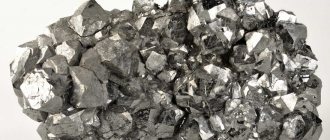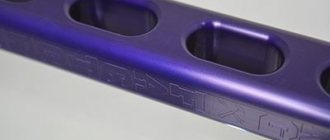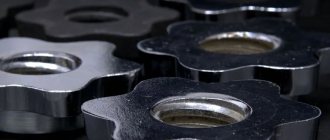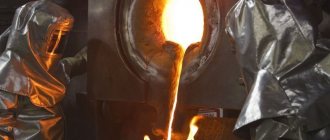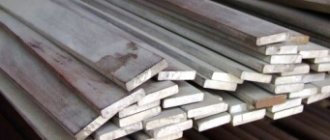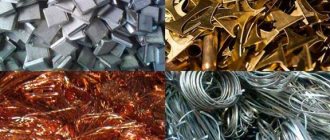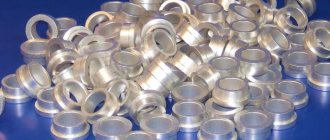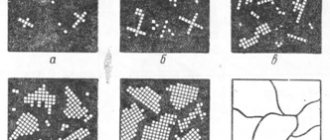We calculate the weight of rolled sheets
Calculating the weight of rolled metal is a fairly simple task of this class. Simplicity is determined by the shape of the sample being studied. To begin calculations, you need to know the following characteristics:
- geometric dimensions of the test sample;
- metal density (for steel you can use the average indicator, which is 7850 kg/m3);
The first stage involves calculating the weight of a sheet of metal with an area of one square meter and a thickness of one millimeter. The volume of this sample is calculated and multiplied by the density of the steel. It is obtained by standard multiplication of three geometric parameters: length, width, height. Multiplying the result by the density, we get a value equal to 7.8 kg/m3. It will allow you to calculate the weight of a sheet of any geometric size and shape. Convenient because it does not depend on length, width, thickness. You can get the final value without resorting to preliminary recalculation. Therefore, the main task will be to calculate the volume of the selected sheet.
Sheet metal
For example, the weight of a sheet whose size is one meter long, two meters wide, 0.35 mm thick will weigh 5.5 kg. A sheet 5 mm thick, measuring 1.5 m wide and 6 meters long will weigh 353.25 kg.
Before using a metal sheet as a ceiling or building structure, you should evaluate its weight.
Sheet weight
According to reference books
The collection of reference materials contains tables of metals, from which it is easy to determine the weight of rolled metal of any type, from ferrous and non-ferrous metals or alloys. In addition, the collection contains formulas for calculating the weight of metal by size for workpieces of various configurations, data on the specific gravity of metals.
You have to refer to the reference book when performing mathematical calculations on your own, for example, to a table of metal densities. To calculate the mass of a non-ferrous metal part, you will need a conversion factor.
With the finished table it is easy to independently calculate the weight of a sheet of metal. For a given thickness and grade of steel, the theoretical weight of 1 m2 is found, the desired value is multiplied by the area of the sheet. This is especially convenient for steel with corrugations, protrusions, zinc coating, and the rolling method (cold or hot) is also taken into account.
It simplifies the calculation of the mass of the channel and I-beam - products with a complex cross-section. There is a table for them indicating the profile number and the corresponding weight 1 linear meter. m to kg. You don’t need to bother calculating the weight of steel reinforcement; besides, the table shows the number of linear meters per 1 ton.
Similar tables exist for L-shaped metal profiles: the weight of 1 m of corner is indicated for a specific thickness and width of the shelf. True, such calculations differ from the actual weight, since the tables are compiled on the basis of GOST. In reality, rentals do not always meet state standards.
The density of steel depends on temperature indicators. All table data corresponds to a temperature of 20°C. This note does not apply to non-ferrous rolled products.
What is a conversion factor?
It allows you to calculate the weight of products made of any material. It is obtained as the ratio of the density of the selected material to the density of steel. Next, to calculate the required parameter, it is enough to calculate such a parameter of a steel product of a given shape. The resulting result will be multiplied by the conversion factor for this material.
The coefficient is a dimensionless quantity. It has its own specific meanings for various metals and alloys. For example, aluminum has 0.34, copper - 1.14, and 1.12 is used for OTS5-5-5 bronze.
To calculate the weight of a sheet made of the specified bronze, it is necessary to obtain the parameter of the same sheet of steel, multiplying with a conversion factor.
Metal conversion factor
The same calculation method, the use of a conversion factor, can be fairly applied to non-metallic rectangular products. For example, to textolite with a coefficient of 0.18, organic glass - 0.15. The results obtained will satisfy the accuracy requirements.
Chemical properties of metals
All metals exhibit reducing properties. The ease of donating an external electron is used in photovoltaic cells. The degree of activity is determined by the activity series. The most active ones have one electron at the outer level.
The general chemical properties of metals are expressed in reactions with the following compounds.
- With non-metals
4 Li + O2→ 2 LiO2
3 Mg + N2 → Mg3N2
Reactive metals react with halogens and oxygen. Only lithium, calcium and magnesium interact with nitrogen. Most metals, when interacting with oxygen, form oxides, and the most active metals form peroxides (N2O2).
- With metal oxides
2 Ca + MnO2 → 2 CaO + Mn(heating)
- With acids
Mg + H2SO4(dil)→MgSO4 + H2
Hydrogen in acids is replaced only by those metals that come before hydrogen in the voltage series.
- With salt solutions
Fe + CuSO4→ Cu + FeSO4
Cu + 2 AgNO3→ 2 Ag + Cu(NO3)2
More active metals displace less active metals from compounds.
- Chemical properties of alkali and alkaline earth metals (reactions with water)
2 Na + 2 H2O → 2 NaOH + H2
Ca + 2 H2O →Ca(OH)2 + H2
What makes calculating the weight of metal more difficult?
A serious difference in the data obtained for calculating the mass of a steel product is the technology of its production. The difference between cold-rolled metal and hot-rolled metal can be quite significant. We are talking about the accuracy of geometric characteristics while maintaining density along the entire length of the product.
The use of continuous heating and subsequent cooling leads to such negative phenomena as oxidation and recrystallization. The unevenness of these processes causes a change in such a parameter as thickness.
Metal weight
The accuracy of calculations for cold-rolled and hot-rolled metal profiles will differ. The error caused by thickness instability requires obtaining some average value.
Why is it better to use a metal calculation calculator?
Rolled metal is used everywhere: in construction, housing and communal services, etc. It often requires transportation. However, machines have a certain carrying capacity, exceeding which is unacceptable. Here the question arises: how to find out the tonnage of the metal if it cannot be placed on the scales due to its large volume? This calculation is performed by a special calculator designed in such a way that it is able to take into account all the features of rolled metal, including non-standard shapes.
Without calculating the weight of rolled metal, you risk overpaying for cargo delivery. If you call a truck that is too large to transport, you will definitely overpay. Shipping costs will be high. If you decide to save money, you risk registering a car with a smaller carrying capacity. As a result, you will either have to order another truck or arrange for a larger cargo transport. The result will be the same - overpayment and loss of time.
Previously, people independently calculated the mass of a certain amount of rolled metal. However, they were extremely complex and often led to errors. With the popularization of the Internet, calculating the weight of rolled metal is not difficult.
How to calculate the mass of a rectangular profile?
A rectangular profile is a parallelepiped with a given wall thickness. The wall thickness is specified in the technical documentation for a specific sample.
Square profile
Mass calculation can be done in two ways. In the first method, the cross-sectional area is calculated: for a sheet of a given thickness. Calculate the mass of a rectangular parallelepiped based on its external dimensions. Then the same calculations are made for a parallelepiped with internal dimensions. The difference between the two values will be the desired characteristic.
In the second method, the weight of one wall of the structure is calculated. If the cross-section is square, multiply by four. If it is rectangular, the sizes of the smaller and larger walls will be calculated separately. Then multiply each value by two and add the results to get the final figure.
Square profile weight
To simplify the process, special tables have been developed.
Elements of the periodic table
Alkali and alkaline earth elements
These include elements from the first and second groups of the periodic table. Alkali metals from the first group are soft metals, silver in color, easy to cut with a knife. They all have a single electron in their outer shell and react perfectly. Alkaline earth metals from the second group also have a silvery tint. Two electrons are placed at the outer level, and, accordingly, these metals interact less readily with other elements. Compared to alkali metals, alkaline earth metals melt and boil at higher temperatures.
Show/Hide text
| Alkali metals | Alkaline earth metals |
| Lithium Li 3 | Beryllium Be 4 |
| Sodium Na 11 | Magnesium Mg 12 |
| Potassium K 19 | Calcium Ca 20 |
| Rubidium Rb 37 | Strontium Sr 38 |
| Cesium Cs 55 | Barium Ba 56 |
| France Fr 87 | Radium Ra 88 |
Lanthanides (rare earth elements) and actinides
Lanthanides are a group of elements originally found in rare minerals; hence their name "rare earth" elements. Subsequently, it turned out that these elements are not as rare as initially thought, and therefore the name lanthanides was given to rare earth elements. Lanthanides and actinides occupy two blocks, which are located under the main table of elements. Both groups include metals; all lanthanides (except promethium) are non-radioactive; actinides, on the contrary, are radioactive.
Show/Hide text
| Lanthanides | Actinides |
| Lantan La 57 | Actinium Ac 89 |
| Cerium Ce 58 | Thorium Th 90 |
| Praseodymium Pr 59 | Protactinium Pa 91 |
| Neodymium Nd 60 | Uranium U 92 |
| Promethium Pm 61 | Neptunium Np 93 |
| Samaria Sm 62 | Plutonium Pu 94 |
| Europium Eu 63 | Americium Am 95 |
| Gadolinium Gd 64 | Curium Cm 96 |
| Terbium Tb 65 | Berkeley Bk 97 |
| Dysprosium Dy 66 | California Cf 98 |
| Holmium Ho 67 | Einsteinium Es 99 |
| Erbium Er 68 | Fermium Fm 100 |
| Thulium Tm 69 | Mendelevium Md 101 |
| Ytterbium Yb 70 | Nobelium No. 102 |
Halogens and noble gases
The halogens and noble gases are grouped into groups 17 and 18 of the periodic table. Halogens are non-metallic elements and all have seven electrons in their outer shell. In noble gases, all the electrons are in the outer shell, so they hardly participate in the formation of compounds. These gases are called “noble” gases because they rarely react with other elements; that is, they refer to members of the noble caste who have traditionally shunned other people in society.
Show/Hide text
| Halogens | Noble gases |
| Fluorine F 9 | Helium He 2 |
| Chlorine Cl 17 | Neon Ne 10 |
| Bromine Br 35 | Argon Ar 18 |
| Iodine I 53 | Krypton Kr 36 |
| Astatine At 85 | Xenon Xe 54 |
| — | Radon Rn 86 |
Transition metals
Transition metals occupy groups 3–12 on the periodic table. Most of them are dense, hard, with good electrical and thermal conductivity. Their valence electrons (with the help of which they are connected to other elements) are located in several electron shells.
Show/Hide text
| Transition metals |
| Scandium Sc 21 |
| Titan Ti 22 |
| Vanadium V 23 |
| Chrome Cr 24 |
| Manganese Mn 25 |
| Iron Fe 26 |
| Cobalt Co 27 |
| Nickel Ni 28 |
| Copper Cu 29 |
| Zinc Zn 30 |
| Yttrium Y 39 |
| Zirconium Zr 40 |
| Niobium Nb 41 |
| Molybdenum Mo 42 |
| Technetium Tc 43 |
| Ruthenium Ru 44 |
| Rhodium Rh 45 |
| Palladium Pd 46 |
| Silver Ag 47 |
| Cadmium Cd 48 |
| Lutetium Lu 71 |
| Hafnium Hf 72 |
| Tantalum Ta 73 |
| Tungsten W 74 |
| Rhenium Re 75 |
| Osmium Os 76 |
| Iridium Ir 77 |
| Platinum Pt 78 |
| Gold Au 79 |
| Mercury Hg 80 |
| Lawrence Lr 103 |
| Rutherfordium Rf 104 |
| Dubnium Db 105 |
| Seaborgium Sg 106 |
| Borium Bh 107 |
| Hassiy Hs 108 |
| Meitnerium Mt 109 |
| Darmstadt Ds 110 |
| X-ray Rg 111 |
| Copernicium Cn 112 |
Metalloids
Metalloids occupy groups 13-16 of the periodic table. Metalloids such as boron, germanium and silicon are semiconductors and are used to make computer chips and circuit boards.
Show/Hide text
| Metalloids |
| Boron B 5 |
| Silicon Si 14 |
| Germanium Ge 32 |
| Arsenic As 33 |
| Antimony Sb 51 |
| Tellurium Te 52 |
| Polonium Po 84 |
Post-transition metals
The elements, called post-transition metals , belong to groups 13–15 of the periodic table. Unlike metals, they do not have shine, but have a matte color. Compared to transition metals, post-transition metals are softer, have lower melting and boiling points, and higher electronegativity. Their valence electrons, with which they attach other elements, are located only on the outer electron shell. Post-transition metal group elements have much higher boiling points than metalloids.
Show/Hide text
| Post-transition metals |
| Aluminum Al 13 |
| Gallium Ga 31 |
| Indium In 49 |
| Tin Sn 50 |
| Thallium Tl 81 |
| Lead Pb 82 |
| Bismuth Bi 83 |
Determining the weight of a round profile
Round metal products include solid rods, fittings, and pipes of various diameters. The approach to solving the problem remains the same. If the product is solid, it is necessary to calculate the volume, multiply by the density of the material. The volume of metal is calculated using known geometric formulas.
Round profile weight
If the round workpiece is hollow inside, you need to know the wall thickness. Next, you can use one of the methods applicable to calculate the value of rectangular rolled products. The only difference will be the calculated ratios for finding the volume.
Chemical properties of non-metals
Nonmetals exhibit oxidizing properties. The most active nonmetal is fluorine. It reacts violently with all substances, and some reactions are accompanied by combustion and explosion. Even water and platinum burn in a fluorine atmosphere. Fluorine oxidizes oxygen and forms oxygen fluoride OF2.
Nonmetals react with the following substances.
- With metals
3 F + 2 Al → 2 AlF3 (heating)
S + Fe →FeS (heating)
- With other non-metals
2 F2 + C → CF2 (heating)
S + O2→ SO2(heating)
- With complex substances
4 F2 + CH4→CH3F + HF
3 O2 + 4 NH3→ 2 N2 + 6 H2O
Non-metals such as boron, graphite, and diamond have less activity. They may exhibit restorative properties.
2 C + MnO2 → Mn + 2 CO
4 H2 + Fe3O2 → 3 Fe + 4 H2O
How to find out the mass of a hexagonal profile?
Solid metal rods with a hexagonal cross-section are often used. The calculation method for such products remains the same. It is necessary to remember from the school geometry course how the volume of a regular hexagonal parallelepiped is calculated.
The task is greatly simplified if you know the size or number of such a rental. All numbers are given in a standardized table.
The hexagonal profile with the smallest number 10 weighs only 0.68 kg, the largest number 60 weighs 24.5 kg.
Hexagonal profile
The calculations are based on a formula for calculating the volume of a regular hexagonal prism. Having calculated this volume, it is multiplied by the density of the metal. A mass of hexagonal product is obtained.
It should be remembered that the use of simplified methods gives approximate results. They are used for express assessments. When developing design documentation in detail, more accurate indicators are used.
Groups and periods of the Periodic Table
Groups are vertical rows in the periodic table. In groups, elements are combined based on the highest oxidation state in their oxides. Each group consists of a main and secondary subgroup. The main subgroups include elements of small periods and elements of large periods with the same properties. Side subgroups consist only of elements of large periods. The chemical properties of the elements of the main and secondary subgroups differ significantly.
A period is a horizontal row of elements arranged in increasing order of atomic (atomic) numbers. There are seven periods in the periodic system: the first, second and third periods are called small, they contain 2, 8 and 8 elements, respectively; the remaining periods are called large: in the fourth and fifth periods there are 18 elements, in the sixth - 32, and in the seventh (not yet completed) - 31 elements. Each period, except the first, begins with an alkali metal and ends with a noble gas.
The physical meaning of the serial number of a chemical element: the number of protons in the atomic nucleus and the number of electrons rotating around the atomic nucleus are equal to the serial number of the element.
How to find out the mass of a pipe
Finding the parameter of a metal pipe of any diameter is carried out similarly to the method for a round profile. Calculate the difference in the areas of two circles. The first has the outer radius of the pipe. The second has the inner radius of the pipe.
The resulting difference is multiplied by the length of the pipe, calculating the volume of metal. Multiplying by the density of steel, the mass of a pipe of a given length is found. Operations with non-ferrous metal products are simplified through the use of a conversion factor.
Pipe weight
When working with ready-made tables, you should find data for a 1 m bar with a radius equal to the outer diameter. Calculate the diameter of the rod, which is equal to the internal diameter. Subtract the smaller value from the larger value to get the desired result. It should be multiplied by the length of the sample.
Properties of the periodic table
Let us recall that groups are vertical rows in the periodic table and the chemical properties of the elements of the main and secondary subgroups differ significantly.
The properties of elements in subgroups naturally change from top to bottom:
- metallic properties increase and non-metallic properties weaken;
- the atomic radius increases;
- the strength of bases and oxygen-free acids formed by the element increases;
- electronegativity decreases.
All elements except helium, neon and argon form oxygen compounds; there are only eight forms of oxygen compounds. In the periodic table, they are often represented by general formulas, located under each group in order of increasing oxidation state of the elements: R2O, RO, R2O3, RO2, R2O5, RO3, R2O7, RO4, where the symbol R denotes an element of this group. The formulas of higher oxides apply to all elements of the group, except in exceptional cases when the elements do not exhibit an oxidation state equal to the group number (for example, fluorine).
Oxides of the composition R2O exhibit strong basic properties, and their basicity increases with increasing atomic number; oxides of the composition RO (with the exception of BeO) exhibit basic properties. Oxides of the composition RO2, R2O5, RO3, R2O7 exhibit acidic properties, and their acidity increases with increasing atomic number.
The elements of the main subgroups, starting from group IV, form gaseous hydrogen compounds. There are four forms of such compounds. They are located under the elements of the main subgroups and are represented by general formulas in the sequence RH4, RH3, RH2, RH.
RH4 compounds are neutral in nature; RH3 - weakly basic; RH2 - slightly acidic; RH - strongly acidic in nature.
Let us recall that a period is a horizontal series of elements arranged in increasing order of atomic numbers.
Within a period with increasing element serial number:
- electronegativity increases;
- metallic properties decrease, non-metallic properties increase;
- the atomic radius decreases.
Corrosion of metal
Corrosion is the process of destruction of metals or metal structures under the influence of oxygen, water and harmful impurities. Not all metals corrode. Their durability depends on a number of factors.
- No corrosion occurs on noble metals.
- On the surface of aluminum, titanium, zinc, chromium and nickel there is an oxide film that prevents corrosion processes.
There are several types of corrosion – chemical and electrochemical.
Chemical corrosion
Chemical corrosion is accompanied by chemical reactions. It is formed under the influence of gases.
3 Fe + 2 O2 → Fe3O4
2 Fe + 3 Cl2 → 2 FeCl3
Electrochemical corrosion
Electrochemical corrosion is the process of destruction of metals or metal structures, which is accompanied by electrochemical reactions. Most metals contain impurities. During the corrosion process, not only metals, but also metal impurities can serve as electrodes.
For example, iron may contain tin impurities. In this case, at the anode, electrons are transferred from tin to iron and the metals dissolve, i.e. iron is subject to corrosion. At the cathode, hydrogen is reduced from water or dissolved oxygen. Electrochemical corrosion can be accompanied by the following processes.
Anode: Fe2+ – 2e → Fe0
Cathode: 2H+ + 2e → H2
Methods of protection against corrosion
Various methods of protecting metals from corrosion are popular in industry.
- Protective coatings
Coatings protect surfaces from oxidizing agents. They are various substances:
- coating with a less active metal (iron is coated with tin);
- paints, varnishes, lubricants.
- Creation of special alloys
The physical properties of alloys and pure metals are different. Therefore, to increase the resistance, additional metals must be added to the alloy.
